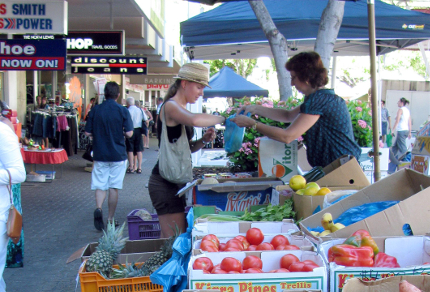This morning, the Townsville Golf Club course glistened silver with dew, as though an endless bolt of shimmering fabric had been draped over the gentle hills and valleys during the night and left to await the sun’s touch that would, like a magician or miracle worker, turn every sparkling intersection of threads into liquid diamond. The bald, blue sky of the past few days was interrupted by soft-looking cloud that resembled white, carded wool pulled into tufts and tossed into a blue bowl. I walked with the bowl overturned above me and with sore feet – the residue of Saturday’s ankle-rolling and knee-jolting hike – carrying me on a gentle stroll.
A female masked woodswallow, all shades of silvery grey and fawn, wore a shadow-like mask over her eyes and throat as she scouted the world from her power line sentry post. The blue-faced honeyeaters and yellow-throated miners I observed feeding in an orange-flowering shrub last Friday again sent the plant into shivers as they lapped its nectar, and again several of the honeyeaters flew from shrub to fence to check me out.
I strolled a little way into Bicentennial Park, spotting a willie wagtail, which is a long-tailed flycatcher outfitted with the avian equivalent of a tuxedo in its handsome black and white plumage. I also noticed a fishing enthusiast in a deliciously yellow boat anchored on the blue of the Ross River, with the golf course and some of those tufts of cloud beyond him. That scene encapsulated the essence of the morning – the serenity, the exquisite, gentle beauty.
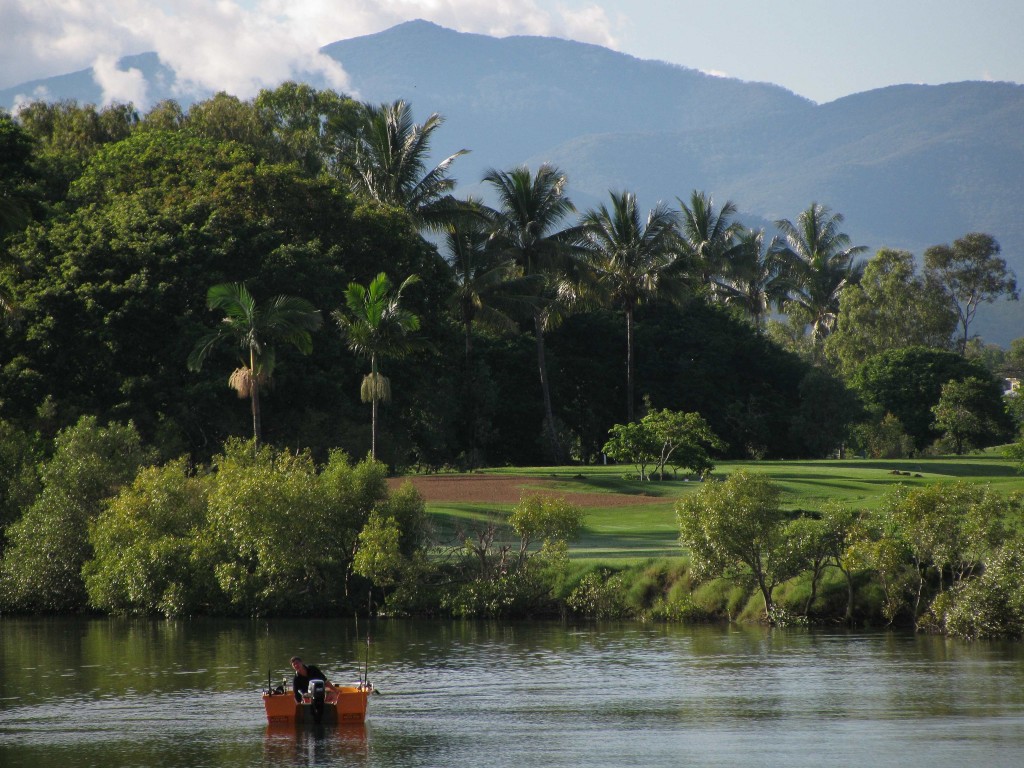
Angler on Ross River (© Magi Nams)
On my return to the house, I caught up my blog postings and pondered what to write for today. Two topics occurred to me – Cotter’s Market and geckos. Although seemingly disparate subjects, a connection exists between them, as you will see.
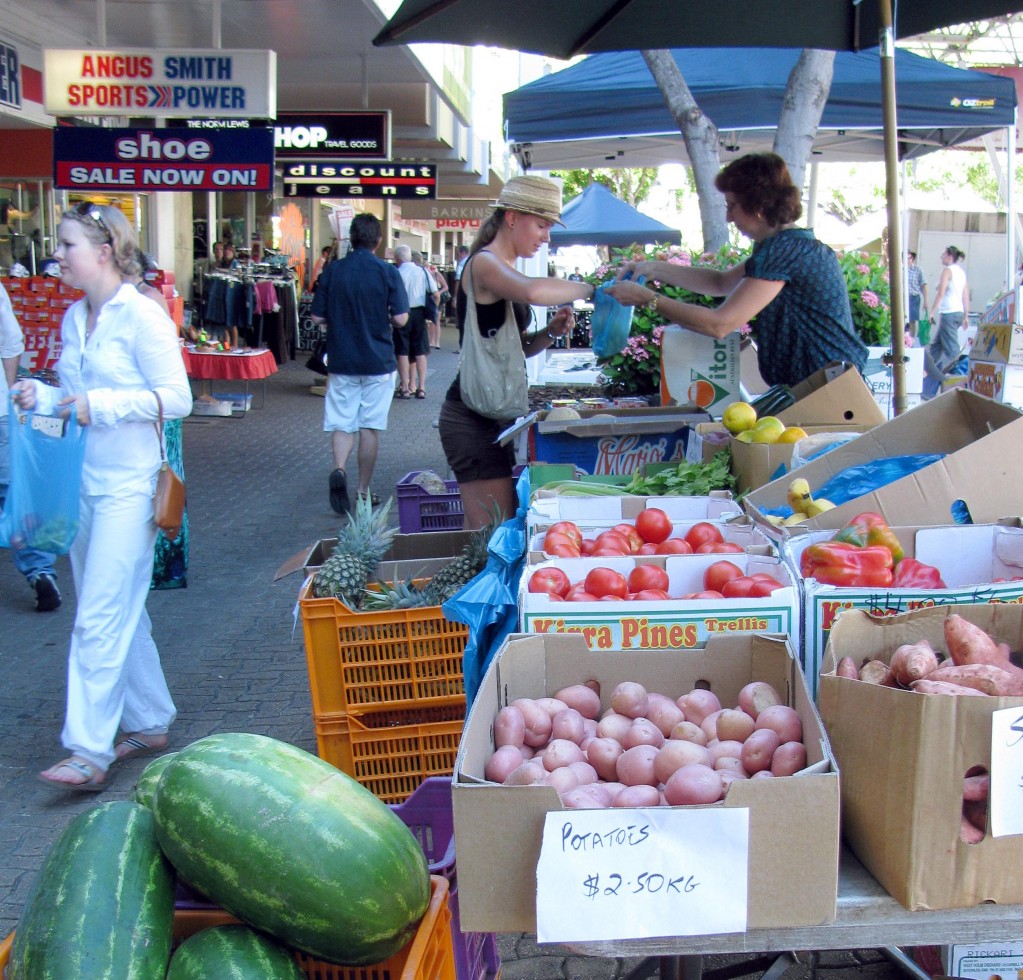
Produce Seller at Cotters Market (© Magi Nams)
After our cycling excursion from Rowe’s Bay to Cape Pallarenda yesterday, Vilis and I popped into Cotter’s Market at the Flinders Mall in downtown Townsville, an award-winning arts and crafts market that showcases North Queensland products. Fewer vendors were present than during the Christmas holiday season, yet we strolled past jewelery makers, artists, fruit and vegetable sellers, clothing designers, a leather worker, and various tables featuring candies, honey, baked goods, soaps, carved wooden platters, and novelty items made from kangaroo feet and the skins of cane toads. Vilis bought a broad-rimmed hat in a hat store, which like a number of the stores in the two-block mall, was open during the morning market.

Crocodile Skin Belts (© Magi Nams)
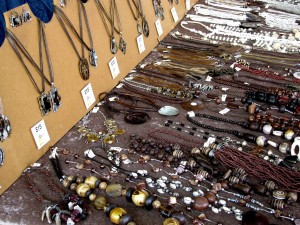
Jewellery at Cotters Market (© Magi Nams)
As during previous visits to the market, I looked for my favourite vendors, a couple of artists both painting nature subjects but with strikingly different styles, and a ceramic artist who creates, among other things, geckos.
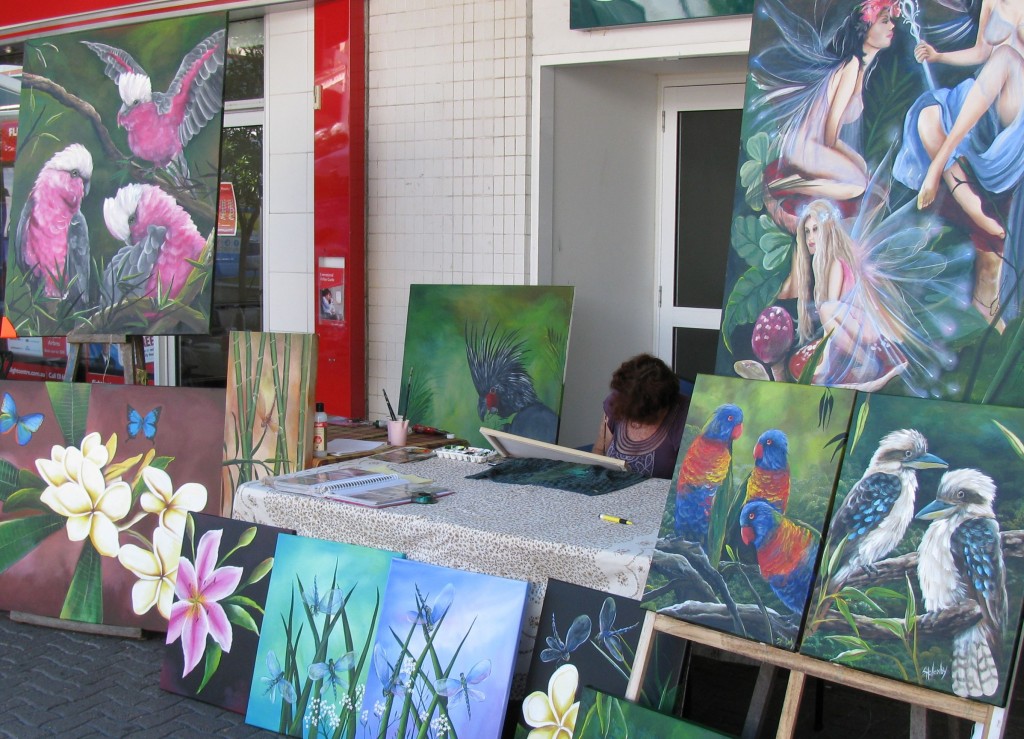
Nature Artist at Cotters Market (© Magi Nams)
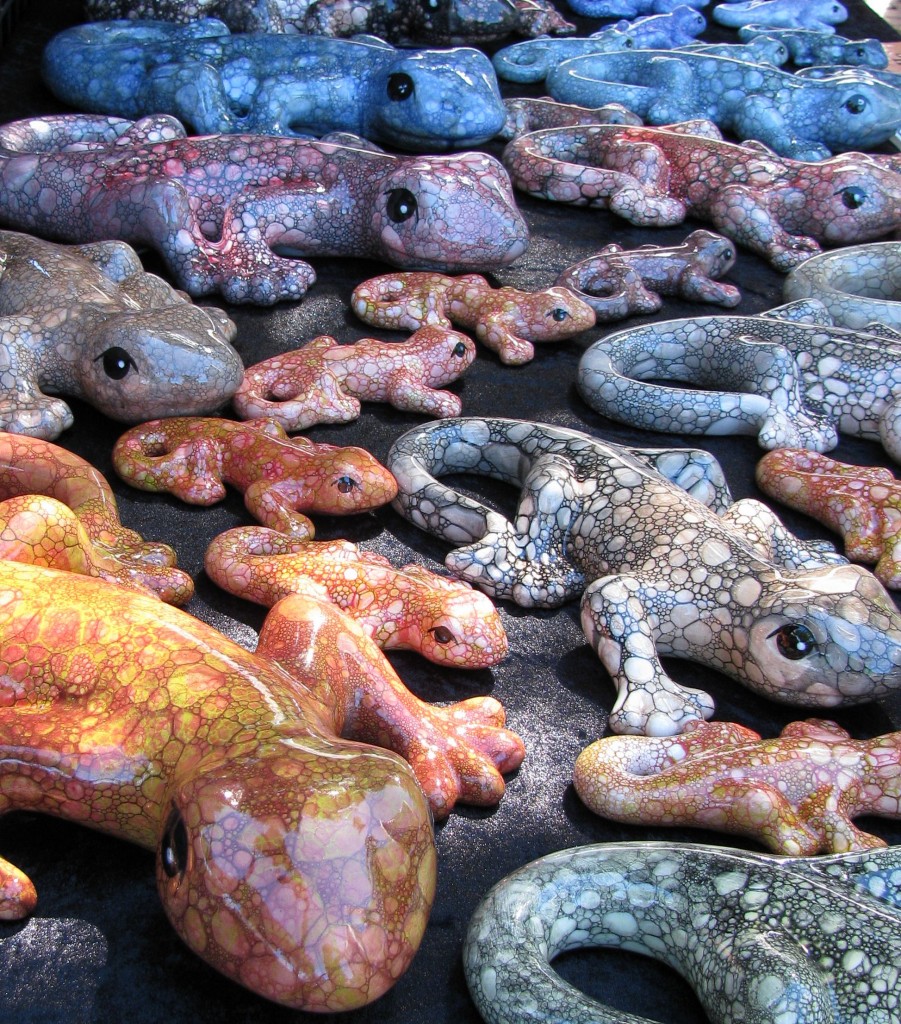
Ceramic Geckos (© Magi Nams)
.
.
Geckos crop up frequently at the market, most obviously in a store called Gecko Interiors, which features brightly-coloured home interior accessories, but I’ve also noticed gecko earrings, pendants, and iridescent metal sculptures, in addition to smooth, dappled ceramic geckos. The same artistic interest doesn’t seem to apply to other Australian lizards, such as the skinks (of which there are far more), dragons, or goannas, or to the three other major reptilian groups occurring in Australia, the crocodiles, turtles, and snakes. I suspect that the reason for this can be summarized in three words: Asian house gecko. This is the charming gecko that spends the dark hours hunting moths on my windows.
A native of Southeast Asia, the Asian house gecko arrived in Australia on cargo destined for several ports, and has since taken up residence in urban centres across the top of Australia and as far down the east coast as Coffs Harbour in New South Wales.1 My reptile guide informed me of this, as well as the fact that this gecko is intimately associated with human residences, which Vilis and I have already experienced, just as we have noted the agility it displays while racing up walls and windows and scampering across ceilings.
Australia is home to 115 species of geckos, all of which are soft-bodied, large-eyed, and nocturnal in their habits.2 They occur throughout the continent with the exception of Tasmania, the mountainous south, and the extreme southeast region.2 Nearly all have patterned skin, with the leaf-tailed geckos exhibiting exquisite camouflage that makes them nearly impossible to pick out against lichen-encrusted tree bark or rock faces.3 A dozen species of geckos inhabit the Townsville region,4 and four of these, including the Asian house gecko, are known to inhabit buildings.5
I’ll miss the house geckos when we return to Canada. Nearly every night, I hear their loud, distinctive “chuck-chuck-chuck” call, which until I researched geckos for this post, I thought had belonged to some nocturnal bird. During the evenings, it is a peaceful pastime to watch the geckos on the windows, their expanded toe pads clinging to the pebbled glass, their quick, darting tongues snatching moths from the air and cramming them into their mouths until the little lizards look like they possess frilly gills. Vilis and I have observed individual geckos chasing other geckos from a particular area of window hunting territory. We’ve seen them mating on the glass, and more than once have stood mesmerized while gazing at their thin-skinned chests and throats heaving in and out with every breath. We’ve detected the regular chest pulsation due to heartbeats, and I’ve wondered whether, if the glass were not pebbled, I could see the geckos’ internal organs through that thin, translucent skin. If, in less than three months, I have become enchanted with geckos, is it any wonder North Queenslanders took these lizards to heart long before I did?
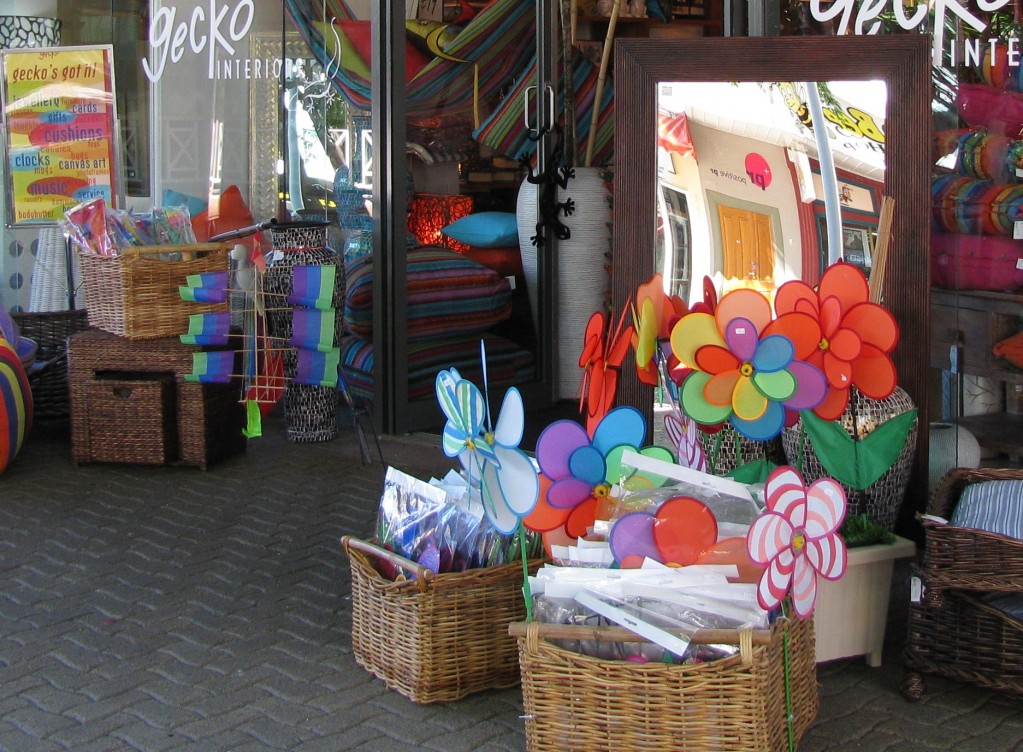
Gecko Interiors Store in Flinders Mall (© Magi Nams)
Reference:
1. Steve Wilson and Gerry Swan. A Complete Guide to Reptiles of Australia, 2nd edition. 2008. New Holland Publishers (Australia) Pty Ltd, Sydney, p. 72; 2. Ibid, p. 54; 3. Ibid, pp. 55-109; 4. Ibid, pp. 66, 72, 74, 76, 80, 84, 86, 90, 92, 98, 106; 5. Ibid, pp. 66, 72, 76, 90.

